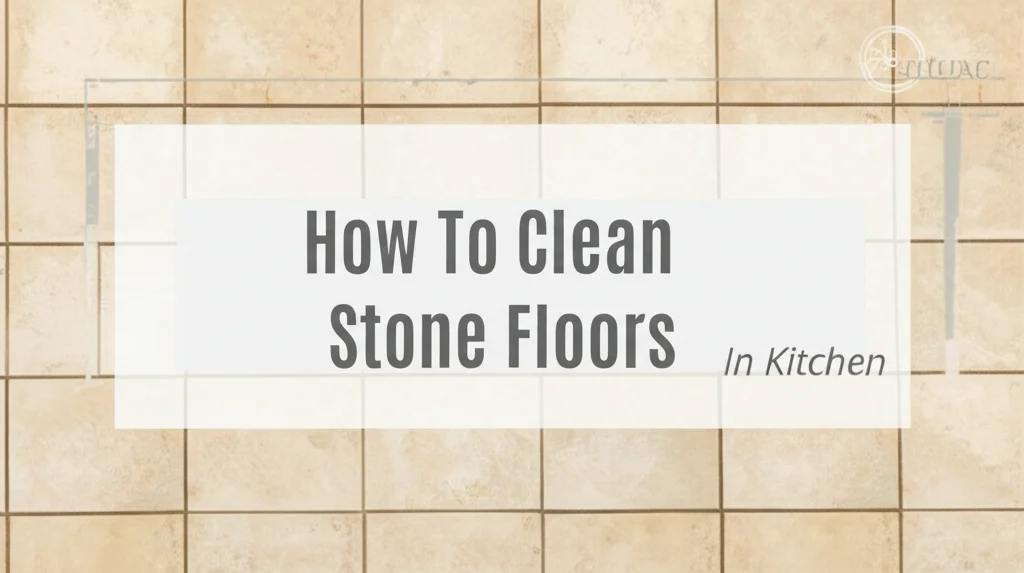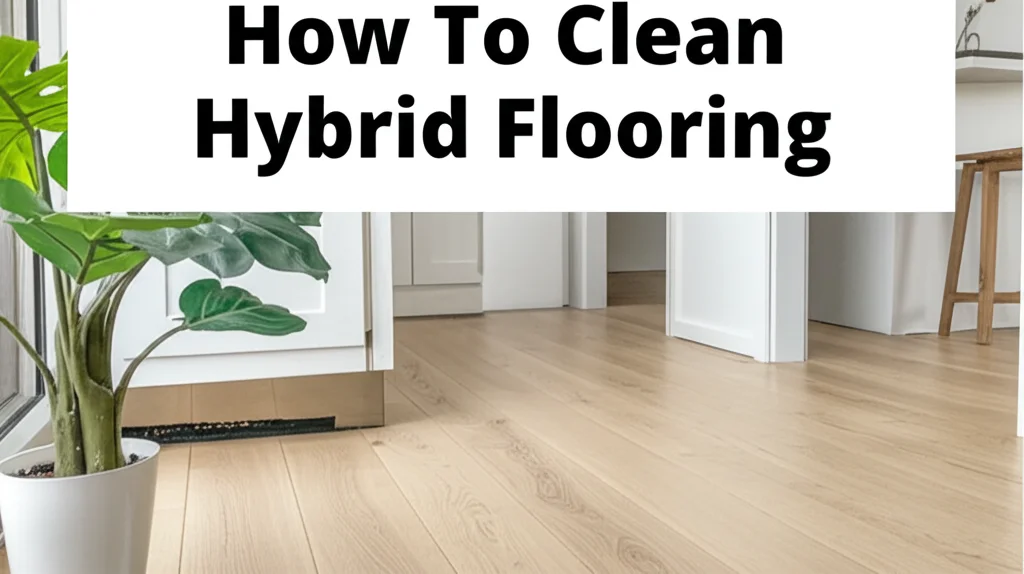· Flooring · 7 min read
How To Clean Stone Floors In Kitchen

Keeping Your Kitchen Stone Floors Beautiful
Is your kitchen the heart of your home? It’s likely a high-traffic area, and if you have stone floors, you know they can show wear and tear quickly. Cleaning stone floors in the kitchen doesn’t have to be a daunting task. This guide will walk you through everything you need to know to keep your stone floors looking their best, from daily maintenance to tackling tough stains. We’ll cover different stone types, the best cleaning solutions, and preventative measures to protect your investment. Let’s dive in and learn how to maintain the beauty of your kitchen stone floors!
Takeaway:
- Identify your stone type for proper cleaning.
- Use pH-neutral cleaners specifically designed for stone.
- Avoid harsh chemicals and abrasive tools.
- Regular sweeping and mopping prevent buildup.
- Seal your stone floors periodically for added protection.
What’s the quickest way to clean stone kitchen floors?
Regularly sweep or vacuum to remove loose dirt and debris. Then, mop with a pH-neutral stone cleaner diluted in warm water. Rinse thoroughly and dry with a clean cloth to prevent water spots. This simple routine keeps your floors looking fresh and prevents damage.
Understanding Your Stone Floor Type
Before you start cleaning, it’s crucial to identify the type of stone you have. Different stones require different cleaning approaches. Using the wrong cleaner can cause etching, discoloration, or other damage. Here’s a breakdown of common kitchen stone floor types:
- Granite: A very durable stone, granite is resistant to scratches and stains. However, it’s still porous and needs sealing.
- Marble: A softer stone, marble is prone to etching from acidic substances like lemon juice or vinegar. Gentle cleaning is essential.
- Slate: A naturally textured stone, slate is durable but can be susceptible to staining if not properly sealed.
- Limestone: Another relatively soft stone, limestone requires gentle cleaning and regular sealing to prevent damage.
- Travertine: Often used in kitchens, travertine is porous and needs regular sealing to protect it from stains. You can learn more about cleaning dirty travertine floors here.
Knowing your stone type will guide your choice of cleaning products and methods. If you’re unsure, consult a professional stone installer or cleaner.
The Best Cleaning Solutions for Stone Floors
Choosing the right cleaning solution is paramount. Avoid harsh chemicals like bleach, ammonia, and vinegar, as these can damage the stone’s surface. Instead, opt for pH-neutral cleaners specifically formulated for natural stone.
- pH-Neutral Stone Cleaners: These cleaners are designed to effectively remove dirt and grime without damaging the stone. Look for products labeled “for natural stone.”
- Dish Soap (Mild): In a pinch, a very small amount of mild dish soap can be used in warm water. However, rinse thoroughly to remove any residue.
- Baking Soda Paste: For stubborn stains, a paste of baking soda and water can be applied gently. Let it sit for a few minutes before rinsing.
- Rubbing Alcohol: For grease stains, a small amount of rubbing alcohol can be used, but test it in an inconspicuous area first.
Always dilute cleaning solutions according to the manufacturer’s instructions. Using too much cleaner can leave a residue that dulls the shine.
Daily & Weekly Maintenance: Keeping Dirt at Bay
Consistent maintenance is the key to keeping your stone floors looking their best. A little effort each day can prevent dirt and grime from building up, reducing the need for deep cleaning.
- Daily Sweeping/Vacuuming: Sweep or vacuum your stone floors daily to remove loose dirt, dust, and debris. Use a soft-bristled broom or a vacuum with a brush attachment to avoid scratching the surface.
- Weekly Mopping: Mop your stone floors weekly with a pH-neutral stone cleaner diluted in warm water. Use a microfiber mop to effectively lift dirt and grime.
- Doormats: Place doormats at entrances to trap dirt and debris before they reach your stone floors.
- Area Rugs: Use area rugs in high-traffic areas to protect the stone from wear and tear.
Regular maintenance not only keeps your floors clean but also extends their lifespan.
Tackling Stubborn Stains on Stone Floors
Even with regular cleaning, stains can happen. Here’s how to tackle some common kitchen stains:
- Oil-Based Stains: Blot up as much oil as possible with a clean cloth. Apply a poultice of baking soda and water, cover with plastic wrap, and let it sit overnight.
- Wine/Juice Stains: Blot up the spill immediately. Clean with a pH-neutral stone cleaner and rinse thoroughly.
- Coffee/Tea Stains: Use a paste of baking soda and water, let it sit for a few minutes, and rinse.
- Grease Stains: Apply rubbing alcohol to a clean cloth and gently blot the stain. Test in an inconspicuous area first. You can also find helpful tips on removing grease from carpets here.
For particularly stubborn stains, consider consulting a professional stone restoration company.
The Poultice Method Explained
A poultice is a paste-like substance used to draw out stains from porous materials like stone. It works by absorbing the stain over time. Here’s how to make and use a poultice:
- Mix: Combine the absorbent material (baking soda, diatomaceous earth, or talc) with a liquid (water, hydrogen peroxide, or acetone, depending on the stain) to form a paste.
- Apply: Spread a thick layer of the poultice over the stain.
- Cover: Cover the poultice with plastic wrap and tape the edges to seal it.
- Wait: Let the poultice sit for 24-48 hours.
- Remove: Remove the plastic wrap and gently scrape away the dried poultice.
- Rinse: Rinse the area thoroughly with clean water.
Protecting Your Stone Floors: Sealing & Prevention
Sealing your stone floors is crucial for protecting them from stains and damage. Sealers create a barrier that prevents liquids from penetrating the stone.
- Sealing Frequency: The frequency of sealing depends on the type of stone and the amount of traffic. Granite typically needs sealing every 2-3 years, while more porous stones like marble and limestone may need sealing annually.
- Choosing a Sealer: Select a sealer specifically designed for your stone type.
- Preventative Measures:
- Use coasters under drinks.
- Wipe up spills immediately.
- Avoid dragging heavy furniture across the floor.
- Consider using floor protectors under furniture legs.
Protecting your investment with regular sealing and preventative measures will keep your stone floors looking beautiful for years to come. If you’re dealing with other flooring types, you might find information on cleaning luxury vinyl plank flooring here.
FAQ About Cleaning Stone Kitchen Floors
Q: Can I use vinegar to clean my stone floors?
A: No, vinegar is acidic and can etch and damage many types of stone, especially marble and limestone. Always use a pH-neutral cleaner specifically designed for stone.
Q: How often should I reseal my stone floors?
A: The frequency depends on the stone type and usage. Granite typically needs sealing every 2-3 years, while more porous stones may need annual sealing.
Q: What’s the best way to remove a water stain from my stone floor?
A: Try blotting the stain with a dry cloth. If that doesn’t work, create a poultice with baking soda and water and apply it to the stain.
Q: Can I use a steam mop on my stone floors?
A: It’s generally not recommended to use a steam mop on stone floors. The heat and moisture can damage the stone and the sealer. You can learn more about steam mops and flooring here.
Conclusion: Enjoying Your Beautiful Stone Floors
Cleaning stone floors in the kitchen requires a gentle approach and the right products. By understanding your stone type, using pH-neutral cleaners, and implementing a regular maintenance routine, you can keep your floors looking beautiful for years to come. Remember to seal your floors periodically and address spills promptly to prevent staining. With a little care, your kitchen stone floors will remain a stunning focal point of your home. Don’t hesitate to consult a professional if you encounter stubborn stains or have any concerns about your stone’s condition. Now, go enjoy the beauty and elegance of your well-maintained stone floors!




